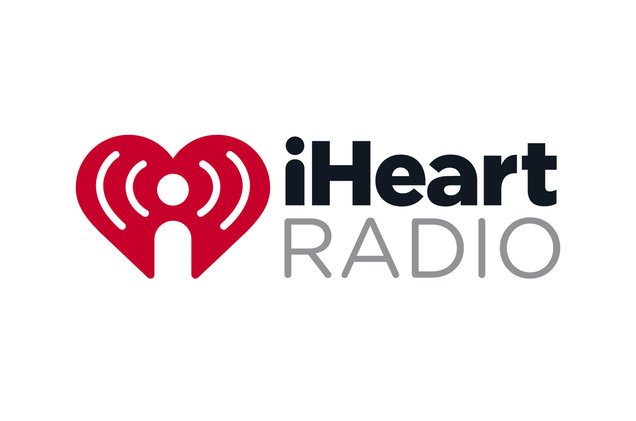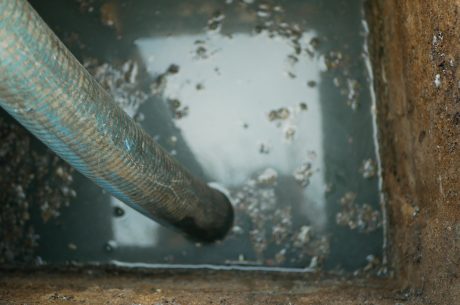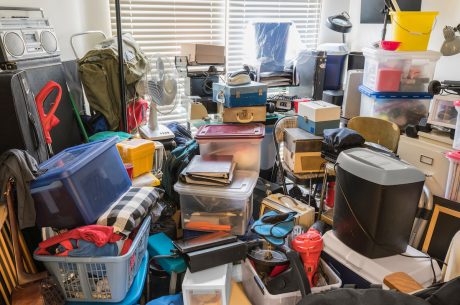In This Article:
- Safe Household Chemical Use and Storage
- Household Chemicals Not To Mix
- Dangerous Chemicals: A Room-by-Room Guide
- What to Do If You Accidently Mix Cleaning Products
- Stay Safe: Final Reminders
Did you know that air fresheners can emit more than 100 chemicals, including VOCs like formaldehyde? These chemicals can irritate your skin, eyes, and throat, posing a hidden threat in your home.
We use a variety of cleaners and household chemicals every day, often without considering the potential dangers.
From the air fresheners that mask odors to the powerful cleaners that tackle tough stains, these products can be harmful if splashed on the skin, inhaled, or ingested—especially when mixed with other chemicals.
Safe Household Chemical Use and Storage
To ensure your home stays safe, handle household chemicals with care. Follow these guidelines to avoid serious accidents:
- Always read and follow the instructions on the label. These instructions are there to ensure safe and effective use.
- Never transfer household products from their original packaging, especially into food containers. This can lead to dangerous mix-ups and accidental ingestion.
- Check the label for disposal instructions if you have leftover products or empty containers. This will prevent harm to people, pets, and the environment.
Household Chemicals Not To Mix
More is not always better when it comes to cleaning. In fact, mixing different household products can often do more harm than good. Many household cleaning products contain chemicals that, when combined, can react in unpredictable and hazardous ways.
Dangers of Mixing Chemicals: Chlorine Gas and Beyond
Mixing chlorine bleach with ammonia creates chloramine gases, which can cause severe respiratory issues and, in extreme cases, could be life-threatening.
Likewise, mixing bleach with acids, such as vinegar or certain toilet cleaners, can produce chlorine gas or other toxic gases or fumes.
Avoid Chlorine Gas – Do Not Mix these Items with Bleach!
Depending on the brand and specific formulation, many everyday items have the potential to produce chlorine gas.
Chlorine gas is highly toxic and can cause severe respiratory distress, and exposure can be fatal in high concentrations or with prolonged exposure.
- Certain dishwasher detergents
- Some pool chemicals
- Drain cleaners
- Oven Cleaners
- Glass and window cleaners
- Lemon juice or citrus-based cleaners
- Lime, calcium, and rust removal products
- Toilet bowl cleaner
- Some multi-purpose bathroom products
- Vinegar
Other Products that React with Bleach
- Ammonia and products containing ammonia
- Hydrogen peroxide
- Rubbing alcohol
Hydrogen Peroxide and Other Dangerous Combinations
When it comes to cleaning, mixing certain products can be extremely dangerous. Here are three combinations you should always avoid:
- Hydrogen Peroxide: Mixing hydrogen peroxide with vinegar can produce peracetic acid, a compound that, even in small amounts, can be dangerous and irritating to the skin, eyes, and respiratory system. Always use these products separately.
- Drain Cleaners: Combining different drain cleaners, especially those with acid or lye, can cause toxic fumes or explosions. Stick to one product at a time, and don’t mix different brands. Be sure to follow the instructions on the label.
- Other Cleaning Products: Mixing various cleaners, especially in the bathroom, can lead to unpredictable and harmful chemical reactions. Always read labels and avoid combining products unless specified.
Dangerous Chemicals: A Room-by-Room Guide
Different areas of your home may harbor various hazardous chemicals. This guide will help you identify these dangers and find safer alternatives.
Bathroom Hazards
- Air fresheners: In addition to the potential for some air fresheners to emit small amounts of formaldehyde, air fresheners contain other dangerous chemicals, including volatile organic compounds (VOCs) and aerosol propellants. These VOCs may contribute to indoor air pollution and irritate the respiratory system.
Air fresheners can be flammable. Liquid and gel air fresheners are harmful if ingested, posing risks, especially to pets and children.
Alternatives: For tips on safely keeping the air in your indoor areas fresh, regardless of the odor, see our blog, What’s That Smell. - Ammonia: Found in window cleaners and all-purpose cleaners, ammonia produces fumes that can irritate the eyes, nose, throat, and lungs. People with asthma or lung problems should avoid using ammonia. If it contacts the skin, ammonia can cause chemical burns.
Mixing ammonia with chlorine bleach creates chloramine gas, which can cause severe respiratory issues. In high concentrations, it can be life-threatening.
Alternatives: You can use baking soda, vinegar, lemon juice, or a citrus-based cleaner for general cleaning. - Drain Cleaners: Drain cleaners contain lye and other harsh chemicals that can cause severe burns to the skin and eyes and even blindness in extreme cases. Swallowing any drain cleaner can severely damage the throat and stomach, potentially causing death.
Alternatives: Unclog your drains with a plunger or a drain snake. - Mold and Mildew Removers: While effective, mold and mildew removers contain potent fungicides and other toxic chemicals that can harm surfaces and people. If swallowed, they can cause breathing issues and throat irritation.
Alternatives: Homeowners can safely clean up small mold patches using a cleaning product containing hydrogen peroxide. Be sure to wear gloves, eye protection and a mask. Also, ensure proper ventilation.
For large areas of mold, it’s wise to call a professional mold removal service. The trained experts will be able to professionally remediate the mold, including mold that is not visible. - Toilet Bowl Cleaners: Toilet cleaning chemicals are powerful and can be harmful to health. Inhaling their fumes can irritate the lungs, causing coughing and breathing problems.
Alternatives: For a safer toilet cleaning alternative, consider using baking soda and vinegar. This combination effectively removes stains and odors without the damaging effects of harsh chemicals. Additionally, regular scrubbing with a toilet brush can help maintain cleanliness.
Kitchen Dangers
- All-Purpose Cleaners: Some all-purpose cleaning products contain chemicals like ammonia or bleach that pose serious health risks. Prolonged exposure can cause irritation and respiratory issues. Mixing these cleaners with other agents, especially those containing bleach, can create toxic fumes.
Alternatives: Opt for natural or homemade solutions using ingredients like lemon juice, vinegar, and baking soda. - Insect Sprays and Baits: These products often contain potent pesticides that can cause respiratory issues, skin irritation, and severe poisoning if ingested. They are particularly dangerous in food preparation areas.
Alternatives: Use natural pest control methods, such as essential oils (like peppermint or citrus) or a mixture of Borax sugar and water. Also use traps and barriers to keep pests out. - Oven Cleaners: Oven cleaners often contain lye, a potent chemical. If inhaled, it can cause severe burns and respiratory irritation.
Alternative: Clean your oven with a paste made from baking soda and water. Let it sit overnight to loosen grime, then scrub with a sponge. - Window or Glass Cleaners: Window and glass cleaners often contain ammonia, which can irritate the eyes, skin, and respiratory system. Inhaling ammonia fumes can cause coughing and wheezing, especially in people with pre-existing conditions.
Alternative: Use equal parts vinegar and water in a spray bottle for a safer alternative.
Laundry Room Risks
- Bleach: Household bleach can damage the respiratory system if inhaled. If swallowed, it can cause vomiting and severe issues like pulmonary edema.
Caution: Always wear gloves and a mask when using bleach. Don’t mix bleach with other cleaning solutions. - Fabric Softeners: Fabric softeners may contain quaternary ammonium compounds and synthetic fragrances. These items can cause skin irritation and respiratory issues in sensitive individuals.
Alternative: Use natural alternatives like wool dryer balls or vinegar in the rinse cycle. - Laundry Detergents: Common laundry detergents contain surfactants, fragrances, and dyes, which can cause allergic reactions and irritation.
Alternative: Opt for eco-friendly or fragrance-free detergents with plant-based ingredients.
Garage Hazards
- Antifreeze: Antifreeze contains ethylene glycol. It is highly toxic if ingested and can be lethal, especially to pets, due to its sweet taste.
Alternative: Use propylene glycol antifreeze, a safer, less toxic (but still toxic!) option labeled “pet-safe.” - Motor Oil: Motor oil contains heavy metals and hydrocarbons. These can cause skin irritation and dermatitis and harm the environment, especially with prolonged or repeated exposure.
Caution: Always wear gloves and ensure proper oil disposal at a recycling center. - Paints and Solvents: Paints and solvents often contain VOCs that can cause headaches, dizziness, and long-term health issues, including liver and kidney damage.
Also, never leave rags that were used for staining lying around, as they can self-combust. This is true for cleaning rags as well.
Alternative: Choose low-VOC or VOC-free paints and solvents, and ensure proper ventilation when using. - Pesticides: Pesticides can cause nausea, dizziness, and long-term health problems. They are harmful to pets, children and beneficial insects like bees.
Alternative: Use natural or organic pest control methods like diatomaceous earth, neem oil, or homemade insecticidal soap.
More Alternatives – EPA-endorsed Safer Choices
If you want to use an EPA-approved product as an alternative, use the search box on the Safer Choices website to find products that meet the Safer Choice Standard.
The EPA says, “When consumers see the Safer Choice label on a product, they can be confident that the product is among the safest when compared with traditional products.”
What to Do If You Accidently Mix Cleaning Products
In case of an emergency, call 911 and the Poison Control Center.
National Poison Control
1-800-222-1222
Accidents happen, but when it comes to mixing household cleaning products, quick action is imperative. Here’s what you should do if you find yourself in this situation:
Immediate Steps
If you accidentally combine cleaning products, the first step is to let in fresh air. Working as quickly and safely as possible, open windows and doors or otherwise ventilate the area with fans to blow fumes away from you.
Next, leave the room so you do not breathe in toxic fumes. Remove yourself and others from the area and head to a well-ventilated area or outside. If you experience difficulty breathing, dizziness, or a burning sensation, it’s essential to act fast.
When to Seek Medical Attention
If you or anyone else has been exposed to the mixed chemicals and has symptoms like shortness of breath, chest pain, coughing, or burning or watery eyes, seek medical attention immediately.
Call Poison Control or head to the nearest emergency room, especially if the exposure was prolonged or the symptoms are severe. Be sure to bring the containers of the cleaning products involved, as this can help medical professionals provide the best care.
If someone has ingested a hazardous chemical, do not induce vomiting unless specifically instructed by a medical professional or Poison Control.
Stay Safe: Final Reminders
Household cleaning chemicals are useful, but they can be hazardous. Know the dangers of these products, especially when mixed. Prioritize your home and loved ones’ safety.
Always read product labels, follow instructions, and store chemicals safely. With careful attention, you can prevent accidents and maintain a secure, comfortable home.
Brought to you by PuroClean of Matawan, providing professional fire, water, mold restoration and biohazard cleanup services.
Sources:
Air Fresheners. Are They Safe?
https://www.poison.org/articles/air-freshener-171
EPA Pesky Pests and Household Hazards (PDF)
https://www.epa.gov/sites/default/files/2014-06/documents/lesson2_handout.pdf
Household Hazardous Waste
https://www.epa.gov/hw/household-hazardous-waste-hhw
Ten Questions Concerning Air Fresheners and Indoor-Built Environments
https://doi.org/10.1016/j.buildenv.2016.11.009




 PuroClean of Matawan
PuroClean of Matawan